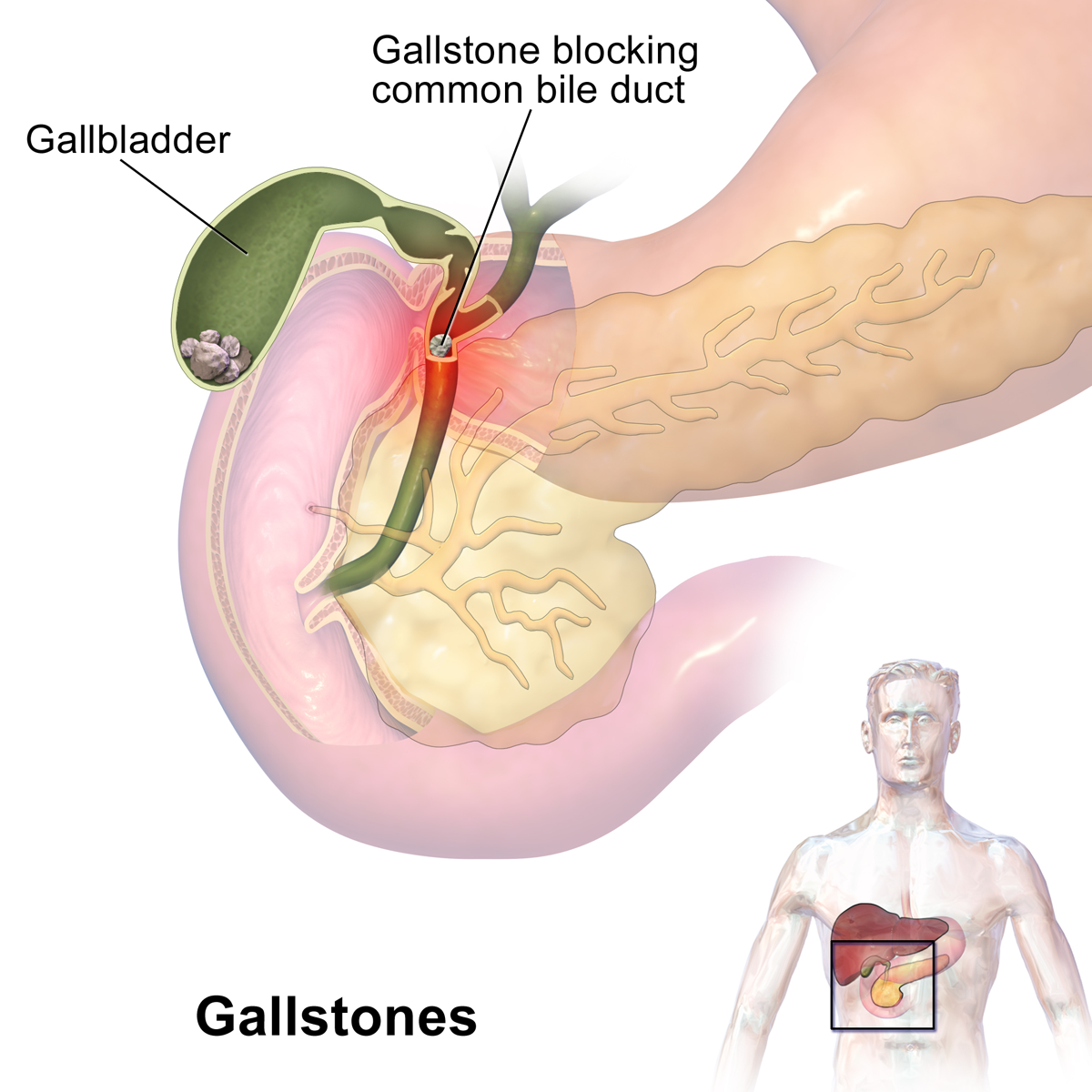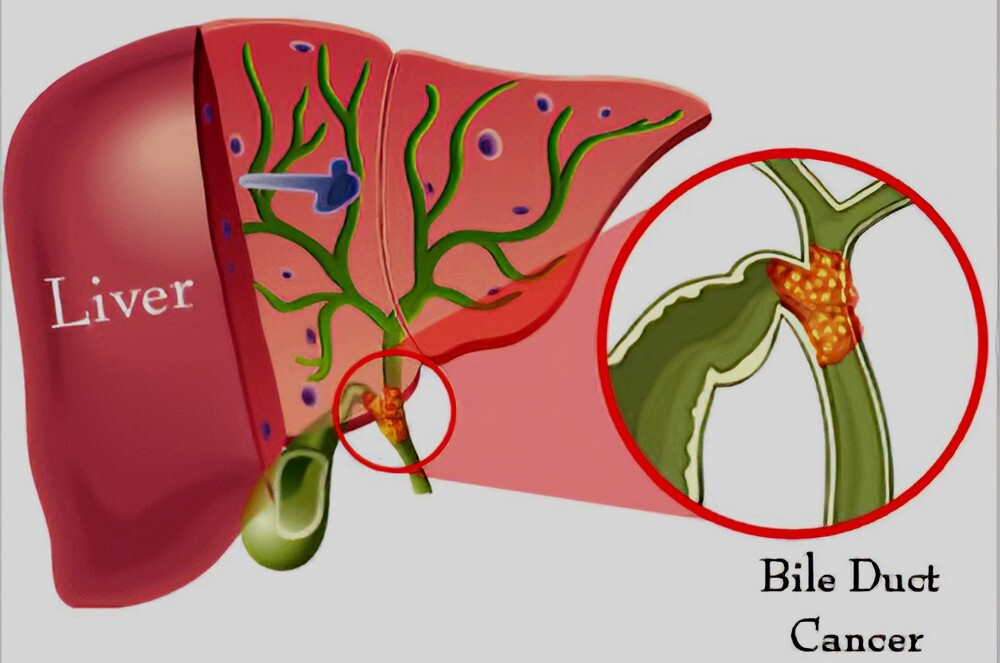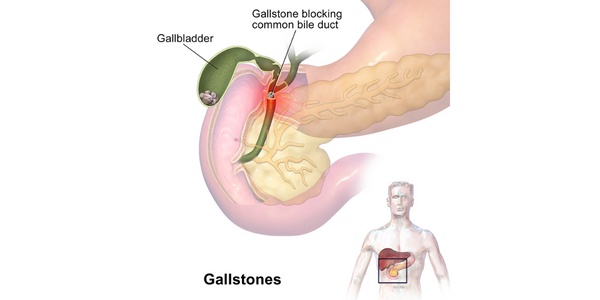Gallbladder
Information you need to understand your disease and the tests you may need.
What is gallstones
Gallstones are pieces of solid material that form in your gallbladder, a small organ under your liver. Your gallbladder stores and releases bile, a fluid made in your liver, to help in digestion. Bile also carries wastes like cholesterol and bilirubin, which your body makes when it breaks down red blood cells. These things can form gallstones.You might not know that you have them until they block a bile duct, causing pain that needs treatment right away.
The two main kinds of gallstones are:
- Cholesterol stones. These are usually yellow-green. They're the most common, making up 80% of gallstones.
- Pigment stones. These are smaller and darker. They're made of bilirubin.

Causes
Gallstones might happen when:
- There’s too much cholesterol in your bile. Your body needs bile for digestion. It usually dissolves cholesterol. But when it can’t do that, the extra cholesterol might form stones.
- There’s too much bilirubin in your bile. Conditions like cirrhosis, infections, and blood disorders can cause your liver to make too much bilirubin.
- Your gallbladder doesn’t empty all the way. This can make your bile very concentrated.
You're more likely to get gallstones if you:
- Have a family history of them
- Are a woman
- Are over age 40
- Are of Native American or Mexican descent
- Are obese
- Have a diet high in fat and cholesterol but low in fiber
- Don’t get much exercise
- Use birth control pills or hormone replacement therapy
- Are pregnant
- Have diabetes
- Have an intestinal disease like Crohn’s
- Have hemolytic anemia or cirrhosis of the liver
- Take medicine to lower your cholesterol
- Lose a lot of weight in a short time
- Are fasting
Symptoms
Gallstones may cause no signs or symptoms. If a gallstone lodges in a duct and causes a blockage, the resulting signs and symptoms may include:
- Sudden and rapidly intensifying pain in the upper right portion of your abdomen
- Sudden and rapidly intensifying pain in the center of your abdomen, just below your breastbone
- Back pain between your shoulder blades
- Pain in your right shoulder
- Nausea or vomiting
Treatment
A physical exam and tests might be required:
- Blood tests. These check for signs of infection or blockage, and rule out other conditions.
- Ultrasound. This makes images of the inside of your body.
- CT scan. Specialized X-rays help to see inside your body, including your gallbladder.
- Magnetic resonance cholangiopancreatography(MRCP). This test uses a magnetic field and pulses of radio wave energy to make pictures of the inside of your body, including your liver and gallbladder.
- Cholescintigraphy (HIDA scan). This test can check whether your gallbladder squeezes correctly. A harmless radioactive material is injected that makes its way to the organ.
- Endoscopic retrograde cholangiopancreatography (ERCP). Your doctor runs a tube called an endoscope through your mouth down to your small intestine. They inject a dye so they can see your bile ducts on a camera in the endoscope.
- Endoscopic ultrasound. This test combines ultrasound and endoscopy to look for gallstones.
Some small gallstones can pass through your body on their own.
Most people with gallstones have their gallbladders taken out. You can still digest food without it. The two procedures are:
- Laparoscopic cholecystectomy. This is the most common surgery for gallstones. A narrow tube called a laparoscope is passed into your belly through a small cut. It holds instruments, a light, and a camera. They take out your gallbladder through another small cut.
- Open cholecystectomy. Bigger cuts are made in your belly to remove your gallbladder.
If gallstones are in your bile ducts, ERCP might be used to find and remove them before or during surgery. You may have to take the medicine for years to totally dissolve the stones, and they may come back after you stop taking it.
Preventive measures
Some lifestyle changes might lower your risk of gallstones.
- Eat a healthy diet that's high in fiber and good fats
- Get regular exercise.
- Avoid diets that make you lose a lot of weight in a short time.
- If you’re a woman at high risk of gallstones (for example, because of your family history or another health condition), talk to your doctor about whether you should avoid the use of hormonal birth control.
What is bile duct cancer
Bile duct cancer, also called cholangiocarcinoma, is when unusual cells grow out of control inside your bile ducts. Those are thin tubes about 4 to 5 inches long that move a fluid called bile from your liver to your gallbladder and small intestine. Bile helps you digest fat in the food you eat.
Bile duct cancer can be identified based on where it starts:
Outside your liver (extrahepatic). This type occurs more often and is more treatable. Cancer might form in one of two areas.
- The hilum region, where your left and right bile ducts come together to form the common hepatic duct. This is called perihilar cancer.
- The distal region, where your common bile duct passes through your pancreas. This is called distal cancer.
Inside your liver (intrahepatic). This type makes up 5% to 10% of cases.

Causes
Certain things can raise your chances of getting it, including long-term inflammation from conditions including:
- Primary sclerosing cholangitis: This inflammation of your bile duct leads to scarring. Many people who have it also have ulcerative colitis, an inflammation of the large intestine.
- Bile duct stones. These are similar to gallstones but much smaller.
- Choledochal cysts: Some people are born with a rare condition that causes bile-filled sacs along your bile ducts. Without treatment, they may lead to bile duct cancer.
- Liver fluke infection: It happens when people eat raw or poorly cooked fish that’s infected with tiny parasitic worms called liver flukes. They can live in your bile ducts and cause cancer.
- Reflux: When digestive juices from your pancreas flow back into your bile ducts, they can’t empty properly.
- Cirrhosis: Alcohol and hepatitis can damage your liver and cause scar tissue, raising the risk of bile duct cancer.
Other things that can make you more likely to get bile duct cancer include:
- Inflammatory bowel disease (including Crohn’s disease and ulcerative colitis)
- Obesity
- Diabetes
- Viral hepatitis
- Drinking a lot of alcohol
Symptoms
Signs of bile duct cancer include:
- Yellow skin or eyes (jaundice)
- Pain in your belly or sides
- Upset stomach and vomiting
- Fever
- Loss of appetite or weight loss
- Weakness
- Itching
- Light-colored stools
- Dark urine
Treatment
Its starts with a physical examination. general health, family history of cancer and liver disease, lifestyle, and habits, including drinking and smoking needs to be known. Check for masses, tenderness, or fluid buildup in your belly will also be done.
Certain tests can find signs of bile duct cancer, including:
- Blood tests: It will help to know whether your liver is working the way it should. Others look for signs of tumors, called markers. Need to check your levels of bilirubin, which can cause jaundice when you have a lot of it.
- Abdominal ultrasound: This imaging test helps look for tumors.
- CT scan or MRI: A CT scan is a powerful X-ray that makes detailed pictures inside your body. An MRI uses high-powered magnets to show organs and other things inside your body. If you have a tumor, these can show its size and location, as well as how healthy your liver is.
- Endoscopy: This uses a tool called an endoscope that’s like a camera on the end of a cable. It helps to see inside your body without surgery. They can look at your esophagus, your stomach, and the beginning of your lower intestine.
- Cholangioscopy: This procedure helps check your bile ducts for problems. In ERCP, or endoscopic retrograde cholangiopancreatography, an endoscope is used to inject dye into your bile ducts. They then take X-rays to look for tumors.
- Magnetic resonance cholangiopancreatography (MRCP): This uses an MRI machine to make images of your bile ducts.
- Percutaneous transhepatic cholangiography (PTC): A needle is inserted through your skin and into a bile duct in your liver. It injects dye and takes an X-ray of the area.
- Laparoscopy: Medication is used to put you to sleep and a small cut is made in your belly. A thin tube is inserted with a light and a video camera to look at your bile duct, gallbladder, liver, and other organs and tissues.
- Biopsy: A sample of bile duct cells or tissue is taken, and a technician checks them under a microscope.
You might have one or more of these treatments:
- Biliary drainage: If your bile duct is blocked, a bypass will be required to cut it off and reattach it on the other side of the blockage. A tube called a stent will be put into the duct to keep bile flowing.
- Photodynamic therapy. an inactive form of a certain medication into your vein is injected. The drug tends to collect in more cancer cells than healthy cells. After a few days, an endoscope is used to aim a special light at the tumor. It activates the drug, killing the cancer cells.
- Radiation. This uses high-energy rays or particles to kill cancer cells & to shrink a tumor. After surgery, it can kill any cancer cells that remain. If the cancer can’t be removed but doesn't spread, radiation can help keep it under control.
- Chemotherapy. As with radiation, medicines are often used to kill cancer cells before or after surgery. You can take chemo by mouth or through a shot into a vein.
- Surgery. Depending on the cancer’s spread, it might be needed to remove some or all of your bile duct, lymph nodes, liver, pancreas, or small intestine.
- Liver transplant. This is a rare treatment that can sometimes cure bile duct cancer.
Preventive measures
Even during cancer treatment, you can take steps to feel as healthy as possible. Start by cutting down on alcohol and quitting tobacco.
Cancer often causes fatigue, or extreme tiredness. You might be so tired that it’s hard to do the things you want to do. Rest will help, but so will some exercise.
What is bile duct stones
Some gallstones move toward the bile duct, which connects the gallbladder and liver to the small intestine. Occasionally, the body removes these stones without a problem. However, in some cases, they can get stuck, meaning that a person has bile duct stones. A bile duct stone is a gallstone that becomes trapped in the bile duct. Doctors may refer to this condition as choledocholithiasis. Having a gallstone in the bile duct can be intensely painful. Depending on where the stone lodges, it can also damage the pancreas, liver, and digestive system.

Causes
Bile duct stones happen when gallstones, which often cause no symptoms, move out of the gallbladder and into the bile duct, blocking the duct.
- have a family history of gallstones
- are pregnant
- are female
- are over the age of 60 years
- have obesity
- eat a very high fat diet
- have a sedentary lifestyle
Symptoms
The most common symptoms include
Pain
The pain usually appears in the upper right abdomen, around the ribs, and it is often extremely intense. Some people find that it radiates to the back or shoulder. It usually appears suddenly, without warning, and it may come and go in waves or last for many hours.
Jaundice
When bile duct stones interfere with liver function, a person may develop jaundice, which may cause their skin or eyes to look yellow. In some cases, the yellow might be very faint, but in others, it can be quite dramatic.
Changes in bathroom habits
Many people with gallstones or bile duct stones have dark urine, even if they drink enough water.
Pancreatitis
When bile duct stones block the flow of pancreatic enzymes to the small intestine, a person may develop pancreatitis. This condition can cause fever, pain in the upper right abdomen, intense nausea, or white or clay-colored bowel movements.
Treatment
The following tests can rule out other potential causes and helps to confirm the diagnosis:
- medical history review, including any recent symptoms
- a physical examination, a press on the abdomen to identify tender areas
- blood tests to look for markers of pancreas or liver inflammation
- imaging tests to look for stones trapped in the bile duct
People should not try to self-diagnose bile duct stones. Treatment almost always requires surgery to remove the stones, and there are several different procedures. Removing the gallbladder might also be suggested to reduce the risk of developing additional stones.
Before surgery, it is important to stabilize a person as much as possible. Recommended additional treatments are:
- intravenous fluids for pancreatitis
- antibiotics
- monitoring in the hospital to ensure that the person is stable enough for surgery
Preventive measures
Taking these measures is especially important for people who have a family history of gallstones or other risk factors, such as obesity.
Preventive measures include:
- Eating a lower fat diet
- Adding more fiber
- Attaining a moderate body weight
- Avoiding crash diets and extremely low calorie diets
- Talking with a doctor about medications
- Seeking excellent prenatal care during pregnancy
What is gallbladder cancer
Gallbladder cancer is an abnormal growth of cells that begins in the gallbladder. Your gallbladder is a small, pear-shaped organ on the right side of your abdomen, just beneath your liver. The gallbladder stores bile, a digestive fluid produced by your liver.
When gallbladder cancer is discovered at its earliest stages, the chance for a cure is very good. Gallbladder cancer may not be discovered until it's advanced because it often causes no specific signs or symptoms. Also, the relatively hidden nature of the gallbladder makes it easier for gallbladder cancer to grow without being detected.
Causes
Gallbladder cancer forms when healthy gallbladder cells develop changes (mutations) in their DNA. The changes tell the cells to grow out of control and to continue living when other cells would normally die. The accumulating cells form a tumor that can grow beyond the gallbladder and spread to other areas of the body.
Most gallbladder cancer begins in the glandular cells that line the inner surface of the gallbladder. Gallbladder cancer that begins in this type of cell is called adenocarcinoma.
Symptoms
Gallbladder cancer signs and symptoms may include:
- Abdominal pain, particularly in the upper right portion of the abdomen
- Abdominal bloating
- Losing weight without trying
- Yellowing of the skin and whites of the eyes (jaundice)
Treatment
Tests and procedures used to diagnose gallbladder cancer include:
- Blood tests. Blood tests to evaluate your liver function & what's causing your signs and symptoms.
- Procedures to create images of the gallbladder. Imaging tests that can create pictures of the gallbladder include ultrasound, computerized tomography (CT) and magnetic resonance imaging (MRI).
Your gallbladder cancer's stage helps determine your prognosis and your treatment options. Tests and procedures used to stage gallbladder cancer include:
- Exploratory surgery. Laparoscopy surgery by making a small incision & insert a tiny camera to look inside your abdomen for signs that gallbladder cancer has spread.
- Tests to examine the bile ducts. Procedures to inject dye into the bile ducts. This is followed by an imaging test that records where the dye goes. These tests can show blockages in the bile ducts.
- These tests may include magnetic resonance cholangiography and endoscopic retrograde cholangiopancreatography (ERCP).
- Additional imaging tests. Most people with gallbladder cancer will undergo a series of scans to help determine whether the cancer has spread or remains localized. Which scans should be performed vary depending on your circumstances. Common scans include a CT and MRI scans of the abdomen and chest.
The stages of gallbladder cancer range from 0 to IV. The earliest stages indicate a cancer that's confined to the gallbladder. Later stages indicate more-advanced cancer that has grown to involve nearby organs or has spread to other areas of the body.
Surgery for early-stage gallbladder cancer
- Surgery to remove the gallbladder. Early gallbladder cancer that is confined to the gallbladder is treated with an operation to remove the gallbladder (cholecystectomy).
- Surgery to remove the gallbladder and a portion of the liver. Gallbladder cancer that extends beyond the gallbladder and into the liver is sometimes treated with surgery to remove the gallbladder, as well as portions of the liver and bile ducts that surround the gallbladder.
If your gallbladder cancer is very small and can be removed completely with cholecystectomy, you may not need additional treatments. If there's a risk that cancer cells may remain after surgery, chemotherapy or other treatments might be suggested.
Chemotherapy
Chemotherapy uses drugs to kill rapidly growing cells, including cancer cells. Chemotherapy can be administered through a vein in your arm, in pill form or both.
Radiation therapy
Radiation therapy uses high-powered beams of energy, such as X-rays and protons, to kill cancer cells. The energy beams come from a machine that moves around you as you lie on a table.
Targeted drug therapy
Targeted drug treatments focus on specific weaknesses present within cancer cells. By blocking these weaknesses, targeted drug treatments can cause cancer cells to die. Targeted drugs might be an option for people with advanced gallbladder cancer.
Immunotherapy
Immunotherapy is a drug treatment that helps your immune system to fight cancer. Your body's disease-fighting immune system might not attack cancer because the cancer cells produce proteins that make it hard for the immune system cells to recognize the cancer cells as dangerous. Immunotherapy works by interfering with that process.



